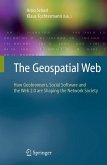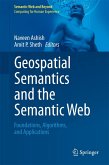The most important attribute of geospatial platforms is their unique potential to aggregate a multitude of public and private geographic data sets, providing access to data from government agencies, industry and the general public. NASA and other organizations have a wealth of planetary science data - representing the output from thousands of satellites in earth-orbit, and from dozens of costly missions to other planets. Benefits derived from both the data and visual interfaces to access the data represent a significant return on investment for the public. Integrating geospatial data with semantic and collaborative Web technology multiplies the public benefits and represents the main focus of this book. The user interfaces of geobrowsers are designed for the layperson, giving conv- ient access to all kinds of geographically referenced information. Geobrowsers hide the technical details related to finding, accessing and retrieving such information. The daunting challenge of the Geospatial Web is to seamlessly integrate and display vastly different information modes. Nowadays, it is not enough to simply display a map of some region; additional dynamic information modes need to be displayed and put into context - from weather sensor readings and live aerial video feeds to daily news updates, photo collections and video archives.
From the reviews:
"The Geospatial Web is an edited volume of 25 chapters, which attempts to bring together the academic research on Geospatial web technologies and provide an up-to-date review of this fast moving discipline. ... would suit postgraduate students who have the knowledge to be selective: picking out chapters of particular relevance." (Ed. Parsons, GIS Professional, Issue 17, 2007)
"The Geospatial Web is an edited volume of 25 chapters, which attempts to bring together the academic research on Geospatial web technologies and provide an up-to-date review of this fast moving discipline. ... would suit postgraduate students who have the knowledge to be selective: picking out chapters of particular relevance." (Ed. Parsons, GIS Professional, Issue 17, 2007)








